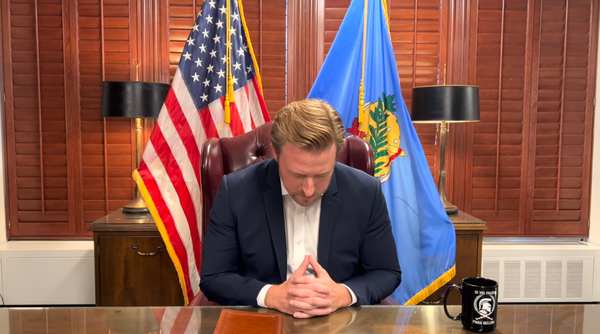The Federal Reserve on Wednesday hiked its benchmark interest rate a half-point and set a June 1 start to drawing down its balance sheet. The Dow Jones rallied strongly following the meeting as Fed chief Jerome Powell seemed to rule out an even bigger rate-hike.
The Fed meeting moves amount to the most aggressive one-day tightening in more than a quarter-century, as policymakers act belatedly to corral rampant inflation. The relative good news, though, is that all of the Fed's hawkish surprises were already out of the bag heading into the meeting.
In recent weeks, Federal Reserve chief Jerome Powell had spoken about moving "expeditiously" to tighten, and "front-end loading" policy moves to keep a lid on inflation. At his post-meeting news conference, Powell began by saying that "inflation is much too high." Policymakers, he said, "are moving expeditiously to bring it back down."
He said there is a consensus among policymakers that 50-basis-point rate-hikes "should be on the table" at the next couple of meetings. He added that the economy is strong enough to handle tighter monetary policy, though the Fed isn't actively considering a 75-basis-point move.
The Fed's statement highlighted Russia's invasion of Ukraine as "creating additional upward pressure on inflation" and also as "likely to weigh on economic activity."
Federal Reserve Tightening Plan
In coming months, the Fed is expected to keep tightening with both fists — rate hikes and balance-sheet runoff. Rate-hikes of at least a half-point are expected in both June and July, before the pace moderates this fall.
Meanwhile, the Fed made official its largely pre-announced plan to reduce the $4.5 trillion in Treasurys and government-backed mortgage securities that were added to its balance sheet from March 2020 to March 2022. As those securities mature, the Fed will allow a portion of them to mature, rather than reinvesting all principal.
As indicated in March meeting minutes, runoff will reach a pace of up to $95 billion per month after three months, including $60 billion in Treasurys and $35 billion in mortgage securities. The initial pace will be set at half those levels.
Today's rate-hike lifted the Fed's overnight lending rate to a range of 0.75%-1%. Futures markets are pricing in about 80% odds that the Fed's benchmark rate will end the year above 3%, according to CME Group's FedWatch page.
As recently as the Dec. 14-15 meeting, all but two of 18 Fed decision makers expect the policy rate to end 2022 below 1%.
Dow Jones, Treasury Yields React
The ratcheting up of Fed hawkishness through the winter and early spring has provoked a correction for the Dow Jones and S&P 500, and a bear market for the Nasdaq composite. But many Wall Street strategists see potential for a rally now that the bad news is already discounted and the inflation rate has likely peaked.
After the Fed meeting policy statement, the Dow Jones initially added to gains, then turned red. But the Dow, like the broader market rallied as Powell spoke and indicated the Fed would stick to half-point moves. The Dow jumped 2.8%. The S&P 500 advanced 3% and the Nasdaq soared 3.2%.
As Powell explained at his March 16 news conference following the latest Federal Reserve meeting, monetary policy "reaches the real economy" by changing financial conditions, which are reflected in market-based interest rates and stock prices.
The Fed doesn't directly target any level for the stock market. However, it's fair to say that a rising Dow Jones would work against the Fed's commitment to tighten financial conditions.
Be sure to read The Big Picture every day to stay in sync with the market direction and what it means for your trading decisions.
After the Fed policy statement, the 10-year Treasury yield was slipped to 2.92% after earlier touching 3%. The 2-year Treasury yield, which is more closely tied to the intermediate-term rate outlook, tumbled to 2.63% from 2.77%.
What Does Fed Tightening Mean For Economy?
Apart from a surge in travel as the pandemic loosens its grip, the U.S. economy already appears to be slowing. The dramatic shift in Fed policy is part of the reason, with the 30-year mortgage rate surging past 5%, hurting housing affordability and demand.
Higher oil and gas prices, thanks partly to Russia's invasion of Ukraine, are weighing on demand, especially in Europe. Meanwhile, fiscal stimulus has ended, wages aren't keeping up with inflation, and businesses have struggled with supply-chain challenges and an excessively tight labor market.
The Fed is aiming for a soft landing, slowing the economy just enough to bring inflation down to its 2% target. Yet increasingly there seem to be two schools of thought on Wall Street and neither of them expect the Fed to succeed.
One group thinks the Fed will overtighten into a slowdown and cause a recession, though probably not for at least another year. The second group thinks the Fed will avoid a recession by relaxing its inflation target and letting up on rate hikes.







